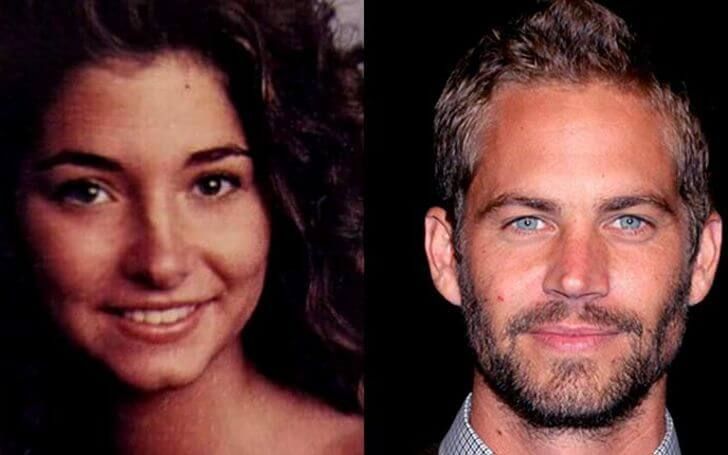The Phenomenon of Serientod: Understanding Character Deaths in TV Series

Introduction
Serientod, or “series death,” refers to the phenomenon of character deaths in television shows. Whether expected or shocking, these deaths are a crucial storytelling device that shapes narratives, deepens emotional engagement, and keeps audiences invested. Over the years, TV series have increasingly used character deaths to create high-stakes drama, drive viewership, and keep stories unpredictable.
Character deaths can evoke powerful emotional responses, from grief and shock to anger and disbelief. Some of the most memorable TV moments in history revolve around the loss of beloved characters, proving how impactful this narrative tool can be. However, not all deaths are received equally—some are seen as brilliant storytelling, while others are criticized as unnecessary or manipulative.
In this article, we will explore the role of Serientod in TV series, different types of character deaths, audience reactions, the reasons behind these deaths, and the ethical considerations that writers face when deciding a character’s fate. By the end, you will have a deeper understanding of why TV series rely on Serientod and how it influences both storytelling and audience engagement.
The Role of Character Deaths in TV Series
Character deaths serve multiple functions in television storytelling. One of the most significant reasons for incorporating deaths is to enhance dramatic tension and raise the stakes. When viewers know that no character is safe, every scene carries an underlying sense of urgency, making the narrative more engaging and unpredictable.
Moreover, Serientod contributes to character development and plot progression. The death of a major character can serve as a turning point in the story, pushing the remaining characters to grow, change, or seek revenge. A well-placed death can redefine the trajectory of a series, keeping it fresh and dynamic. For instance, in “Game of Thrones,” the unexpected deaths of key figures altered the political landscape and intensified the drama.
Another crucial aspect is the emotional weight that character deaths carry. When audiences form strong attachments to characters, their deaths leave lasting impressions, fostering discussions and theories that keep the show relevant even between seasons. However, when poorly executed, these deaths can feel like a cheap tactic, diminishing a show’s credibility.
Different Types of Serientod

Heroic Deaths
Heroic deaths occur when a character sacrifices themselves for the greater good. These deaths are often portrayed as noble and serve to highlight a character’s bravery and moral integrity. Examples include characters who die saving others or in final battles against villains.
Tragic Deaths
Tragic deaths are deeply emotional and often leave audiences heartbroken. These deaths usually happen to beloved characters and are often unexpected. They emphasize the harsh realities of life and create a strong emotional connection with viewers.
Shock Deaths
Some deaths are designed purely for shock value, occurring suddenly and without much foreshadowing. These can be highly effective in keeping audiences engaged, but they can also backfire if they feel forced.
Fake-Out Deaths
Fake-out deaths involve making the audience believe a character has died, only for them to return later. While this can add suspense, excessive use of this tactic can reduce the stakes and make future deaths less impactful.
Unceremonious Deaths
Some characters are written out without much attention, sometimes off-screen. This usually happens due to actor departures or production issues and can frustrate fans who expect a more meaningful send-off.
Audience Reactions and Cultural Impact
Audience reactions to character deaths can vary significantly. Some fans appreciate the realism and unpredictability, while others feel betrayed when a favorite character is killed off. Social media has amplified these reactions, with online communities discussing, analyzing, and even campaigning against certain deaths.
Memorable deaths often lead to widespread discussions, fan theories, and debates. When done right, Serientod can elevate a show’s legacy, making it a cultural touchstone. However, controversial deaths, such as those perceived as unnecessary or poorly written, can result in backlash, affecting a show’s ratings and reputation.
Additionally, television deaths impact audience investment. If a show frequently kills off characters without meaningful storytelling, viewers may become disengaged, feeling that their emotional connections are being manipulated. Thus, maintaining a balance between realism and audience satisfaction is key.
Behind the Scenes: Why Writers Kill Off Characters
Writers and producers have various reasons for deciding to kill off characters. One of the main reasons is narrative necessity. A well-timed death can drive the plot forward, create emotional depth, and introduce new character arcs.
Actor departures also play a major role. Whether due to contract disputes, scheduling conflicts, or creative differences, sometimes a character’s exit is unavoidable. In such cases, writers must decide whether to write the character out through death or another means.
Another factor is the need to maintain viewer interest. Shocking and emotional deaths can generate buzz, increase ratings, and keep audiences engaged. However, overuse of this tactic can lead to viewer fatigue, making deaths feel more like a gimmick than meaningful storytelling.
The Ethics of Killing Characters
The ethics of Serientod involve considerations of representation, audience impact, and narrative justification. In recent years, discussions around representation have gained traction, particularly regarding the “Bury Your Gays” trope, where LGBTQ+ characters are disproportionately killed off. Similarly, racial and gender dynamics in character deaths can influence how these moments are received.
Excessive deaths can also desensitize audiences. When deaths occur too frequently or without narrative weight, they lose their emotional impact, reducing viewer investment. Striking a balance between realism and entertainment is essential for responsible storytelling.
Finally, writers must consider whether a death serves a meaningful purpose. If a death is purely for shock value, it risks feeling exploitative rather than compelling. Thoughtful execution ensures that Serientod remains an effective storytelling tool rather than a mere plot device.
Conclusion
Character deaths in TV series are powerful storytelling devices that shape narratives, evoke emotions, and keep audiences engaged. While they can enhance drama and character development, they must be handled with care to avoid feeling forced or exploitative.
As television continues to evolve, the way deaths are portrayed will also change. With audiences becoming more vocal about their expectations, writers must navigate the fine line between meaningful storytelling and audience satisfaction. Ultimately, Serientod remains one of the most impactful elements in television, leaving lasting impressions on viewers.
FAQs
What is the most shocking Serientod in TV history?
Some of the most shocking deaths include Ned Stark in Game of Thrones and Glenn in The Walking Dead.
Why do some shows kill off main characters unexpectedly?
This is often done to increase dramatic tension and maintain unpredictability.
How do character deaths impact a series’ longevity?
While some deaths enhance storytelling, too many can alienate audiences and damage a show’s reputation.
Are fake-out deaths effective?
Fake-out deaths can add suspense but may lose impact if overused.
Which genres use Serientod the most?
Drama, fantasy, and thriller genres frequently incorporate character deaths.
Can a show survive after killing its main protagonist?
It depends on how well the story adapts post-death; some succeed while others struggle.
How do writers decide when a character should die?
Decisions are based on narrative needs, actor availability, and audience engagement.
YouSie können auch lesen:https://bloggerman.de/dr-joe-dispenza-ehefrau/


